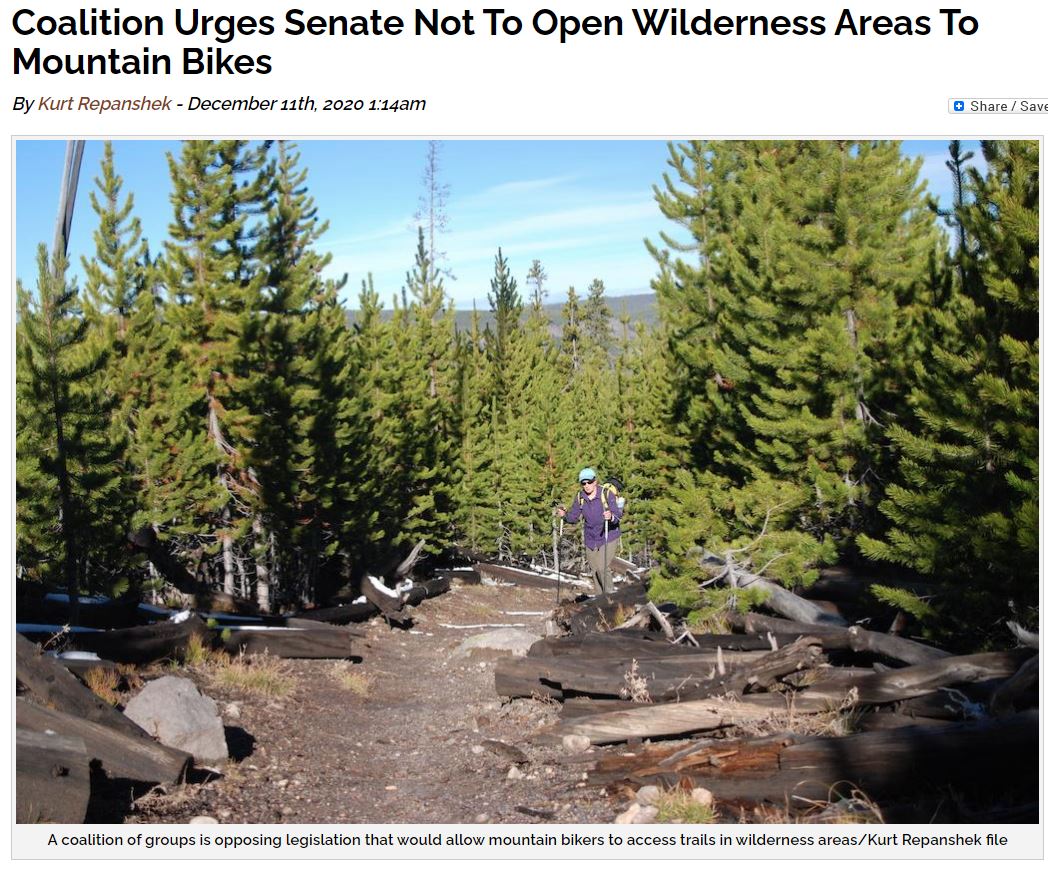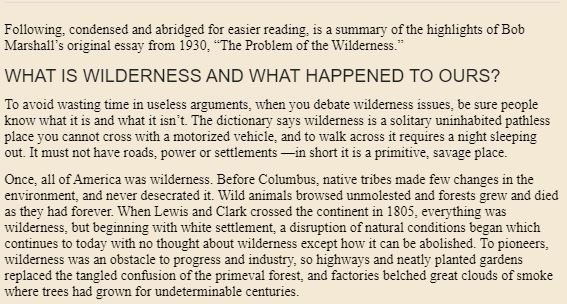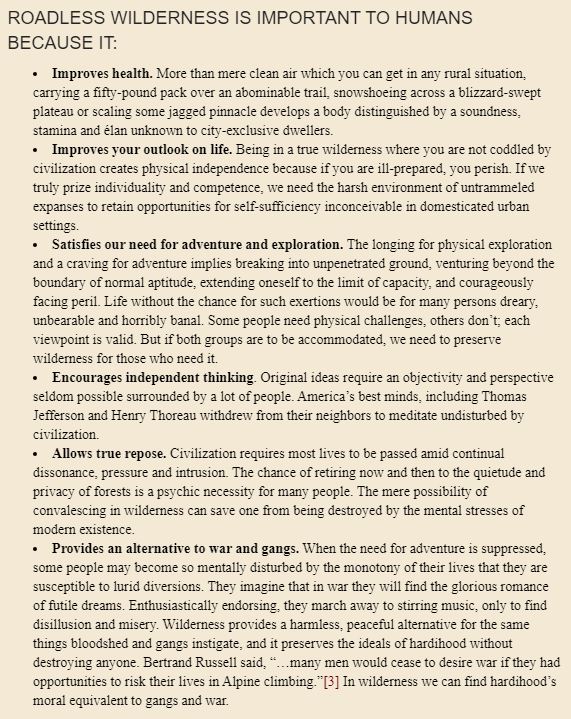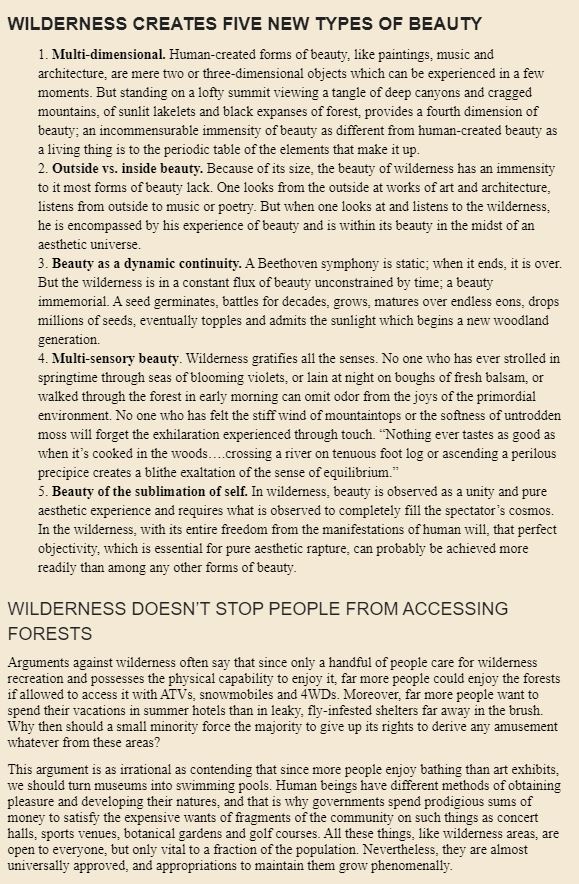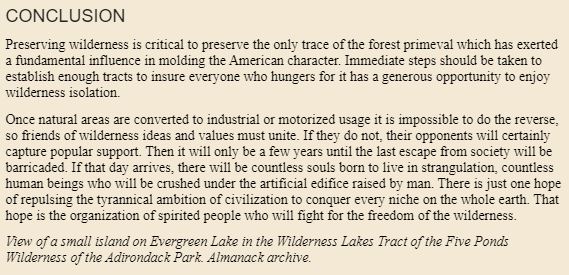A Senate Bill (S. 1695) by Senator Mike Lee, Utah which would allow mountain bikes in designated wilderness was given a hearing in early December. NWSA and other groups wrote opposing this and other measures which would weaken wilderness protections. Read more….
A coalition of groups is pushing to stop legislation in the U.S. Senate that would open wilderness areas to mountain bike use.
The coalition, which includes the American Hiking Society, Appalachian Trails Conservancy, National Wilderness Stewardship Alliance, and Pacific Crest Trail Association, maintains that there are enough trails open to mountain bikers without the need to allow them access to official wilderness.
“We strongly oppose S. 1695, and encourage subcommittee members to oppose this legislation as well,” the group said in a letter to U.S. Sens. Mike Lee, R-Utah, and Ron Wyden, D-Oregon, of the Senate Subcommittee on Public Lands, Forests and Mining, which has been considering the measure. “S. 1695 seeks to open federal wilderness areas to mountain biking, a clear violation of the 1964 Wilderness Act, the nation’s seminal conservation law. Most importantly, S. 1695 would threaten the character of the entire National Wilderness Preservation System by undermining our nation’s bedrock landscape conservation tool.”
Introduced by Lee in 2019, the Human-Powered Travel in Wilderness Areas Act would redefine “human travel” in official wilderness as that which does not involve a “propulsive internal or external motor with a nonliving power source.” When Lee introduced the measure, he said the access was needed to “enrich Americans’ enjoyment of the outdoors by expanding recreational opportunities in wilderness areas.”
Under the legislation, federal land managers — including the National Park Service — would be given the authority to decide whether to allow and how to regulate non-motorized travel in wilderness areas within their jurisdictions.
The Wilderness Act of 1964 prohibits the use of motor vehicles, motorized equipment, motorboats, and other forms of mechanical transport in officially designated wilderness.
In arguing againt the bill, the groups said the Wilderness Act “is more relevant today than ever before.”
“Our nation’s wilderness areas include only 5 percent of our nation’s public lands. In the lower 48 states, it’s merely 3 percent,” they noted. “The remaining 97 percent is open to motorized and mechanized recreation. Designated wilderness areas have a fundamentally different purpose than providing for motorized and mechanized access. In fact, that is the very purpose of the Wilderness Act – to provide for a few remote, pristine areas where nature prevails.”
They also pointed out that “(T)here remains a nearly inexhaustible supply of non-wilderness federal lands that are open to mountain biking and where additional mountain bike trails and opportunities continue to be created. In the last decade, new mountain biking trails have been developed at a historically rapid rate.” READ MORE

